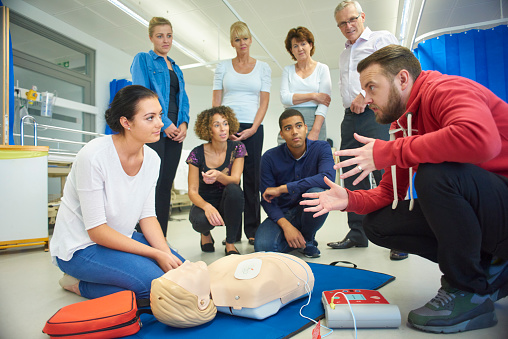CPR or cardiopulmonary resuscitation is one of the basic life skills that everyone should possess. If given on time, CPR significantly increases the survival chances of a heart attack patient. Statistics suggest that every year about 805,000 people die of heart attack, and four out of five heart attacks happen when a person is at his home. A lack of basic CPR procedures might prove fatal in an emergency which makes it essential to attend a CPR class Atlanta.
The suddenness of the situation might induce panic and make you falter in some steps. Performing the whole procedure perfectly is critical to saving the victim’s life. In this article, we will look at some of the common mistakes people make while performing CPR.
But before we discuss the common mistakes, let’s first take a look at what exactly is CPR and why is it important:
What is CPR, and why is it important?
During cardiac arrest, cardiopulmonary resuscitation (CPR) is used to save a person’s life. In such a situation, chest compressions and artificial ventilation are used to prevent further damage to a person’s brain until further measures are taken to restore spontaneous blood circulation and breathing.
CPR is crucial as it can decrease the chances of brain damage during a heart attack. The lack of oxygenized blood is harmful to our brains. If blood flow remains active, even partially, trained medical personnel will have better success resuscitating the patient once they arrive.
Common mistakes to avoid during the procedure:
Not applying enough pressure:
A commonly observed mistake that most people commit while performing CPR is the absence of adequate pressure applied to the victim’s chest. Carrying out proper compressions is vital to delay brain damage in the heart attack patient. The CPR provider generally holds back from putting too much pressure on the victim due to the fear of hurting him. It is advisable to perform 100 to 120 compressions in a minute. Speed also matters while you’re performing CPR. A chest compression that is too slow may not be effective at all, whereas fast chest compressions will fail to push blood around the body.
Wrong bending of fingers: A frequent mistake people make is that they bend their fingers when they apply pressure on the victim’s chest. This hinders the effective circulation of oxygenated blood to different body parts. Instead of bending, fingers should be expanded on the victim’s chest. Remember- you need to compress the patient’s chest, not massage it. Bending stimulates a massaging action rather than a compressing one.
Not calling for help: However important it may be, CPR is still just a way to keep a person alive, and he would still require immediate medical attention. The maximum time a person can stay alive through resuscitation is for six hours. CPR is just the first step in saving a person from having a cardiac arrest. In an emergency, even a millisecond can save someone’s life. The proper order should be to first send for help immediately when you discover an unconscious person and then commence with CPR.
Not enough rescue breaths: CPR certification Atlanta teaches people to also give rescue breaths during the procedure to increase its effectiveness. An injured person undergoing compression-only CPR is likely to lack oxygenated blood soon, as blood contains a limited amount of oxygen. Moreover, in drowning cases, you would be pumping deoxygenated blood into their body. Rescue breaths are also necessary for infants and toddlers as they have a high oxygen demand but low blood volume. Ideally, 2 rescue breaths after every 30th compression should be provided.
Accidentally leaning on the victim: Each chest compression should involve a minimum compression of 5cm, followed by an even release of the chest wall. This will fill up the heart with blood. New rescuers often make the mistake of ‘leaning’ on the victim’s chest when they become tired. CPR is less effective when the chest wall is not completely released after each compression.
How to perform CPR?
For effective CPR training, take an accredited course in first-aid, which includes CPR and the use of an automated external defibrillator (AED). Find a reputable CPR class in Atlanta and learn this life-saving technique to stay ready for emergencies.
We hope these tips will someday come in handy and help you make a huge difference in someone’s life.


